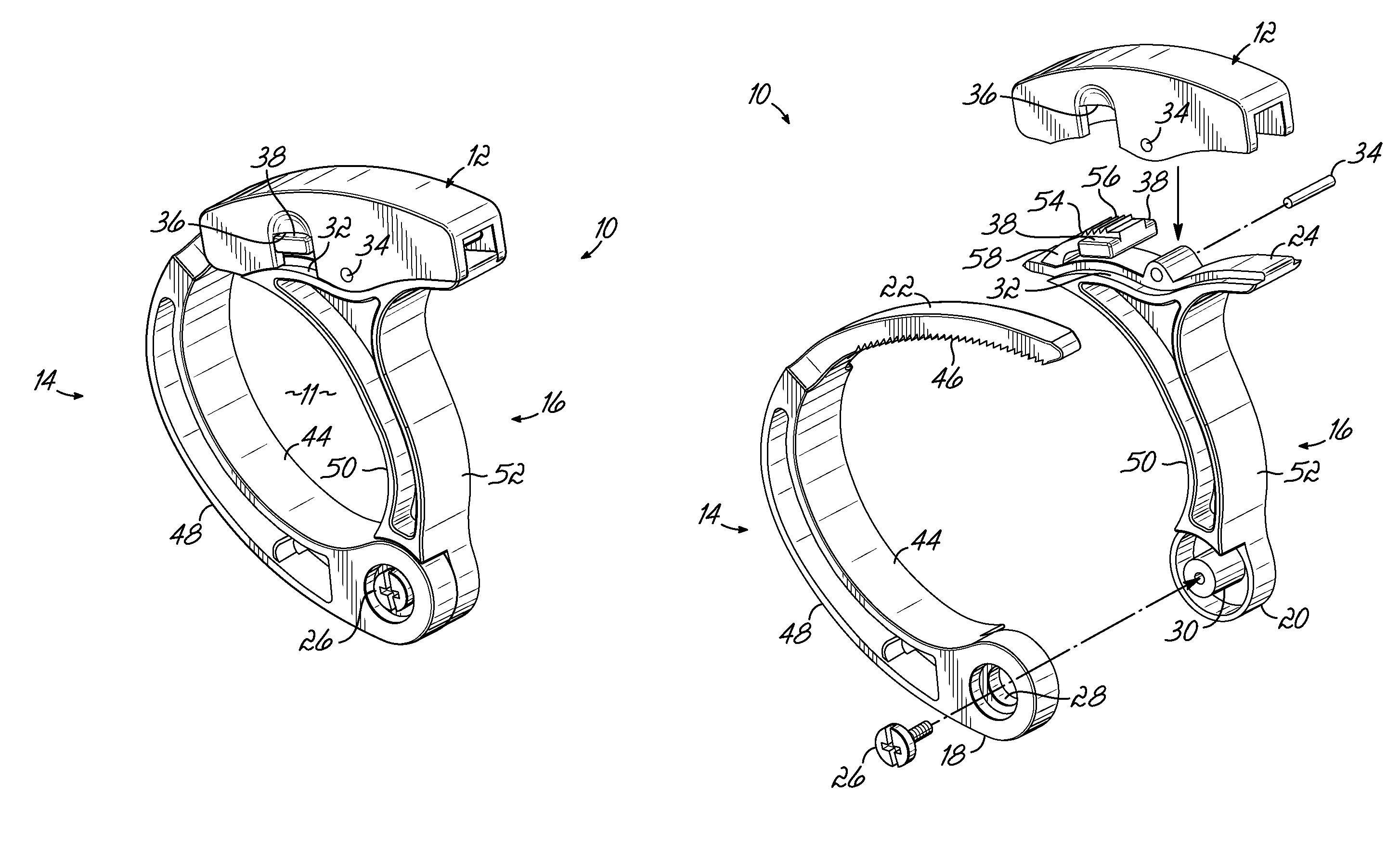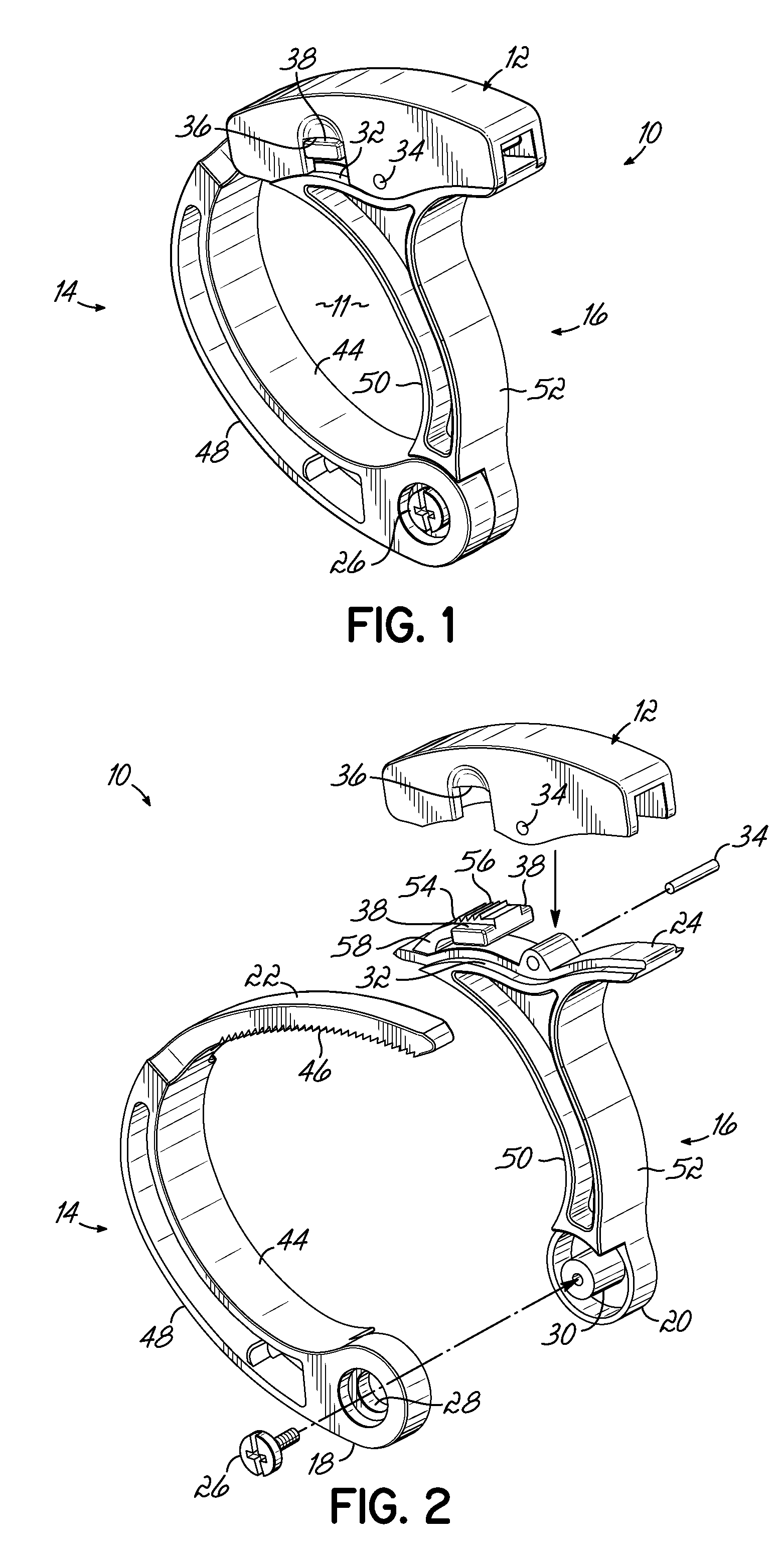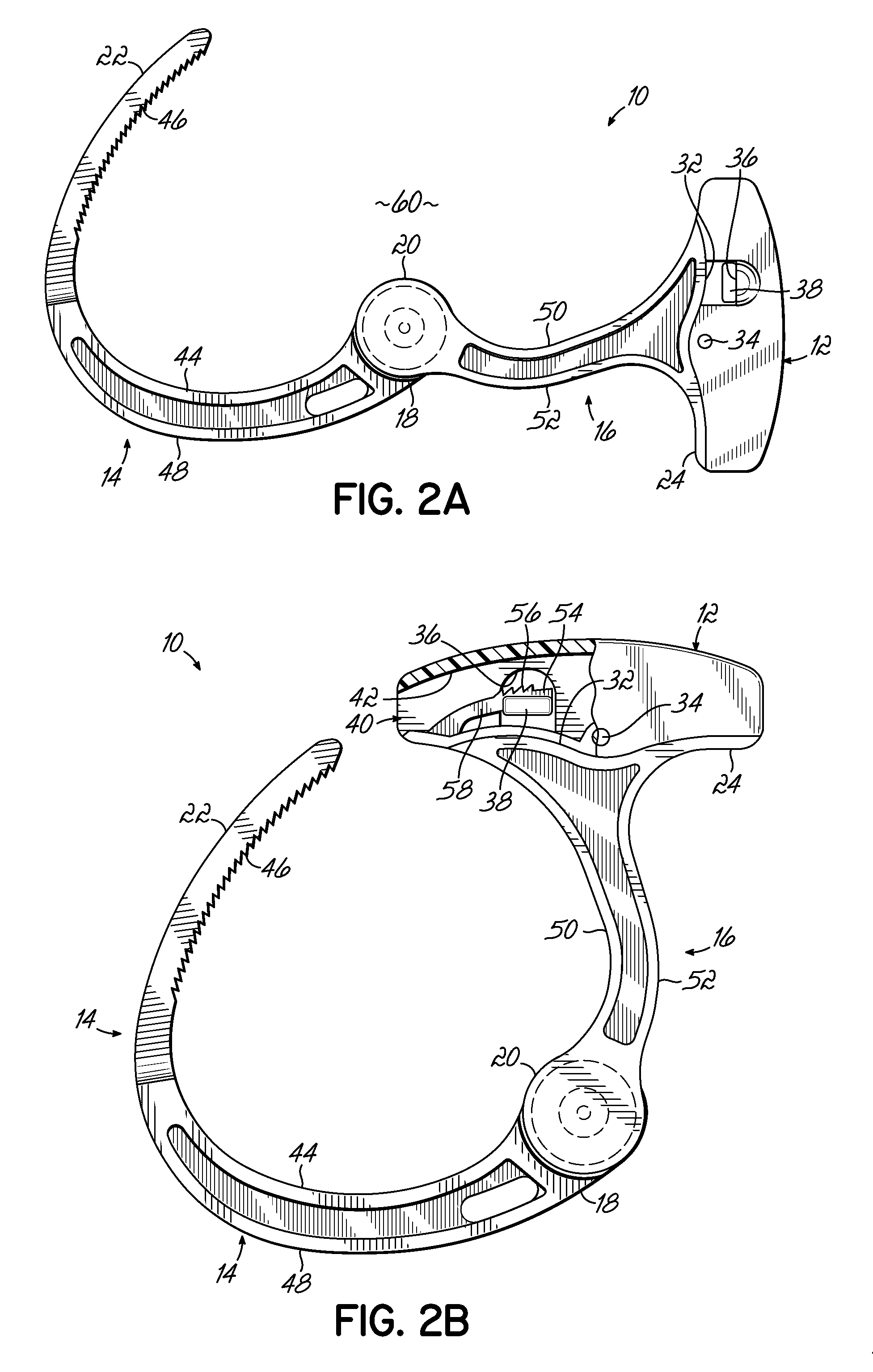Self-aligning handling or storing device
a self-aligning and storage device technology, applied in the direction of handcuffs, flexible container closures, snap fasteners, etc., can solve the problems of unsightly approach, difficult to resolve, and unsafe,
- Summary
- Abstract
- Description
- Claims
- Application Information
AI Technical Summary
Benefits of technology
Problems solved by technology
Method used
Image
Examples
embodiment 850
[0093]FIG. 19 illustrates an embodiment 850. Device 850 has a mount 852 hinged from a cap 854. The mount has an aperture 856 that may be used for any of the hook 830, straight peg 832, or peg 833. A jaw member 858 includes an open handle 860.
[0094]As seen in FIGS. 20A and 20B, a handle 862 may be made detachable, for example by having a T-slot 864 in the jaw member 16. By making the handle detachable, a common manufacturing process may be used to make the planar jaw members with a common T-slot, and a wide variety of arms may be provided to install in the T-slot depending on customer preference.
[0095]FIG. 21 illustrates a device 870 having a first jaw member 874 with teeth 885 and a second jaw member 876 with an aperture 877 and trigger frame 878. In the trigger frame is a tongue groove 880 a pair of forward holes 881 and rear holes 882. A trigger assembly 884 has a pawl portion 886 and an anchor portion 888. Fasteners in the form of pins 889 pass through the holes 881 and 882 and h...
embodiment 910
[0103]FIGS. 24A-25B illustrate an embodiment 910 of a hand cuff like element adapted to be mounted to a flat surface. Device 910 may be conveniently used to organize cords routed across a flat surface, for example a desk or a ceiling. Device 910 has a jaw member 914 and a jaw member 916 with a generally flat face 918. Jaw 914 enters a passage 919 to engage tooth 920. A button 922 in hole 923, when pushed, releases jaw 914 so that it can be removed from the passage 919.
[0104]With reference to FIGS. 25A and 25B, the jaw 916 has a cavity 924 that receives a spring 926, a pawl 928 having the tooth 920, and a base 930 that is secured within the cavity by fasteners 932. The pawl 928 has a spring bore 934 that captures spring 926, and slidably locates in a spring guide 936 in the base. The pawl also has a guide 938 captured by a channel 940 of the base. At least one of hole 923, guide 936 and guide 938 receive a load force (not shown) transmitted when jaw member 914 is pulled in the direct...
PUM
 Login to View More
Login to View More Abstract
Description
Claims
Application Information
 Login to View More
Login to View More - R&D
- Intellectual Property
- Life Sciences
- Materials
- Tech Scout
- Unparalleled Data Quality
- Higher Quality Content
- 60% Fewer Hallucinations
Browse by: Latest US Patents, China's latest patents, Technical Efficacy Thesaurus, Application Domain, Technology Topic, Popular Technical Reports.
© 2025 PatSnap. All rights reserved.Legal|Privacy policy|Modern Slavery Act Transparency Statement|Sitemap|About US| Contact US: help@patsnap.com



